Archives
September 5, 2018
IISC exists to bring the best of collaborative practice to the work of social justice and sustainability. In the early years, some of our detractors felt we were too apolitical, that our call to “get the whole system in the room” was naïve at best and dangerous at worst. Without a power analysis, collaboration across traditional lines of authority, role and identity was of limited interest to some of the organizers and activists we knew. Collaboration might be a good idea for the allies, they thought, but it was silly to think that bringing the power brokers or counterproductive actors in the system into the room with those most affected would lead to meaningful results. That was the early and mid 1990s.
In some ways, our critics were right and we knew it. By the late 1990s, we began to bring diversity and cultural competency explicitly into our framework. After all, collaboration is about working together, and working together across race, class, culture, and role are part and parcel of that kind of work. We stretched our core methodology. We expanded the boundaries of cultural competency to include understanding historic and present-day structural dynamics of oppression and taking action to address structural factors. By the early 2000s we were crystalizing an understanding of power, network theory, and love as critical dimensions of collaboration. Since the late 2000s, we’ve been building tools and methods to bring power, equity, and inclusion into the center of our practice. The next stage of this evolving practice has been an increasingly sharp focus on racial justice in particular, to the point where the pursuit of racial equity is part of our stated mission. And, I’m excited to see how many people see the value of bringing that enriched understanding of collaborative practice to their work for racial justice. At the same time, I’m struck by the continuing importance of protest and civil disobedience to the pursuit of justice.
In this particular moment brings a question into sharp relief in this particular moment. When is it necessary to completely disrupt life or business as usual in order to shine a light on injustices and pursue justice? Can that kind of disruption be done in a collaborative way? What’s the role for confrontation?
I am indebted to Linda Stout and her colleagues at Spirit in Action for their 4Rs approach to social change. They recognize that there are times for Resisting violations of shared values and human rights; Reforming existing systems; Reimagining alternative futures; and Reinventing communities, organizations, and societies from the ground up to reflect the kinds of values we hold dear. If ever there was a time to resist, it’s now. And those who are resisting courageously in ways large and small need spaces of refuge and restoration. It’s exhausting and dangerous work. Reimagining is often led by artists, and the movie Black Panther highlighted the power of reimagining alternative futures. I think that much of our work centers on reforming existing systems, supporting people who are working to transform their institutions from the inside out. And, in a few cases, there are genuine efforts to focus energy and attention on recreating ways of being and doing together that bring the imagined future into reality.
I’ve been sensing a growing desire for a lot more reimagining and recreating. What’s the mix in your work and your world?
August 24, 2018
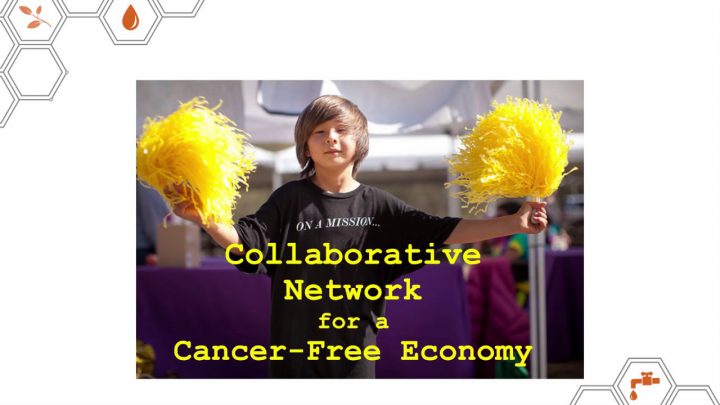
This post originally appeared on the Health and Environmental Funders Network website. It was co-authored by Fred Brown, The Forbes Funds, President & CEO; Debra Erenberg, Cancer Free Economy Network, Strategic Director; and Ruth Rominger, Garfield Foundation, Director, Collaborative Networks Program. IISC was centrally involved with the launch of the Cancer Free Economy Network, serving as lead process designer, facilitator and network coach from 2014-2017. IISC is currently supporting the development of CFEN’s network strategy.
We can do this! Within the philanthropy sector, there are so many solutions emerging around the world from people coming together to tackle the social, economic and environmental problems challenging humanity right now. We are in a time when connecting solutions together to align and reinforce each others’ progress is the most critical strategy across issue silos.
The Cancer Free Economy Network (CFEN) is one such example, where people with solutions — good ideas, strategies, initiatives, expertise, models, products and passion — are collaborating to build an economy that supports health and well being for all. These types of social change networks are held together with universal core values. In CFEN, the values are framed as simply as:
The water we drink, the air we breathe, and the products we use every day shouldn’t make us sick, cause cancer or any other disease.
The network is an open and flexible way to connect to an extended community of people who are building power together to phase out all toxic chemicals manufactured and put into industrial and consumer products that are making us sick and damaging our environment. Collectively, we know of many solutions that are readily available for moving the economy in that direction.
Like many social change networks that take a holistic, collaborative approach, people come together to connect and multiply actions aimed at shifting mindsets, structures and behaviors in many different aspects of the complex problem.
In the case of CFEN, this means there are teams from many organizations coordinating a variety of actions around toxics that together will:
-
Change the Story to show how we can prevent many cancers by addressing the toxic chemicals that are currently accepted as part of our environment.
-
Advance the science supporting health and preventing illness.
-
Shift the market from toxic chemicals to a market producing safe, healthy, and affordable materials.
-
Build the power to implement system changes across diverse constituencies.
Read More
July 18, 2018
This is a repost of a fourth in a series of postings written by former IISC Senior Associate Linda Guinee about power and group facilitation processes, based on research she completed a number of years ago. Today’s post is about how power is built into group narrative. Also check out these other posts on power: “What is Power Anyway?” “Power Dynamics: The Hidden Element to Effective Meetings“
As I was doing research, I came across a batch of work about narrative theory by Sara Cobb and Janet Rifkin (cited below). Cobb and Rifkin researched how a narrative is constructed and what impact it has on the ultimate outcome of mediation sessions. They found that the first story told tends to be privileged and “colonize” later stories told. By framing the discussion to come, this initial story tends to narrow and define the direction of the ensuing conversation. Later versions are generally tied to the initial story and thus are unable to be fully developed. And the outcome of mediation is generally tied to the initial story.
This can also play a role in group facilitation. If the first version told in a group becomes the frame under which all other discussion happens, a facilitator must pay attention to who tells the first story – or to how to reinforce different versions. Read More
July 16, 2018
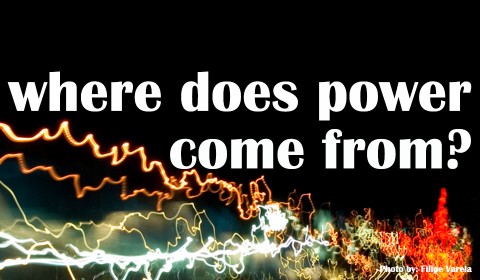
This is a repost of a third in a series of posts on power, facilitation and collaborative process that former IISC Senior Associate Linda Guinee wrote back in 2010. Last week we reposted Linda’s piece “What is Power Anyway?,” which followed a new post by a few of us on power and meetings. Enjoy!
More about power and group processes. There have been a mountain of books written about the “bases of power” and the “types of power”. I’ve done some work to try to boil it down – and find thinking about this very useful in moving forward the conversation about how to address power issues in group processes.
In the 1950s, French and Raven put out a proposal about five “bases” of power, which others added to. Bases of power are what gives a person or group power. French and Raven came up with these five:
- Reward Power – power that comes from the ability to reward the other party for complying
- Coercive Power – power that comes from the ability to punish the other party if they do not comply
- Legitimate or Normative Power – power that comes from accepted group, community or societal norms or values which are generally viewed as “legitimate”
- Referent Power – power that comes from being identified with a person or group (for example, so and so gains power by being friends with X or being a member of Y group)
- Expert Power – power that comes from the perception that the person or group has knowledge
Morton Deutsch later added a sixth:
- Ecological Power – power that comes from being able to control one’s social or physical environmental in such a way that the modified environment induces a desired behavior or prevents an undesired behavior.
Read More
July 12, 2018
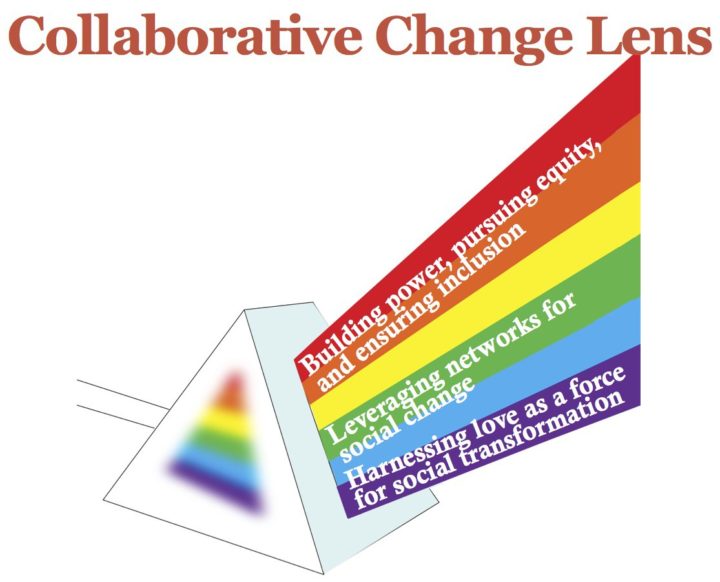
Building on the theme of our recent blog post, Power Dynamics: The Hidden Element to Effective Meetings, we are reposting a series of posts written by our former IISC colleague Linda Guinee. Linda wrote a masters’ thesis on addressing power dynamics in collaborative process design and facilitation. She did this study based on questions raised over the years by another former IISC colleague, Cyndi Suarez (current Senior Editor at NonProfit Quarterly and author of The Power Manual: How to Master Complex Power Dynamics) – and as she put it, “with the belief that if power dynamics are not well understood and addressed, group process facilitators are likely to unknowingly reinforce the status quo – a scary thought for those of us working on social justice and social change!”
As Linda wrote in her opening post in 2010:
“One thing that woke me up at two in the morning – one of those notorious ‘aha’ moments – was that when doing an extensive literature review of group facilitation literature and conflict resolution literature at that time (2005), I found that conflict resolution/engagement literature is packed full of discussions about addressing power dynamics – while group facilitation literature rarely (if ever) talks about power I only found a very small handful of references to power (as in two or three) anywhere in the very extensive group facilitation literature – and only in reference to people with positional power. There is, in fact, an assumption built into group facilitation methodology that collaboration on its own somehow balances power dynamics.”
Here is her second post in the series …
One of the first questions you might ask when thinking about looking at power dynamics in group facilitation is what IS power anyway? This seemingly simple question, of course, is not really all so simple after all. What do you think? How would you describe power?
When I first started trying to answer this question for myself, I found that I was overwhelmed with material – literally hundreds and hundreds of books about what power is, where it comes from, how it operates, etc. For many, a definition of power has to do with the ability to force something to do something they wouldn’t have done otherwise – a coercive definition of power. Feminist psychologist Jean Baker Miller described power as “the capacity to produce a change.” Others (and in fact, our common terminology) talks about power as a “thing” that can be divided, shared, owned, and transferred.
Read More
July 11, 2018
Many articles have been devoted to running effective meetings that build collaboration among teams, yet many fail to discuss the hidden element that can destroy a meeting almost without fail.
Power dynamics – the ways in which power works in a setting – can either sink a meeting and negatively impact relationships for years, or produce more shared power and capacity to get things done. A lot of the difference comes down to how we attend to power dynamics in meetings, how well we plan our meetings, how well we determine what happens within and outside of meetings, and how well we facilitate in the moment.

In every organization, there are people who hold formal power and informal power. Formal power is attributed to someone by virtue of their title or position in the organization. People carry informal power if they have influence over others or their organization, either because of their experience, force of personality or persuasion, unearned privilege, or because they have strong relationships with decision-makers and peers. Power is also deeply influenced by diversity and equity dynamics. In most Western societies today, many decisions in organizations are still controlled by people with certain backgrounds: over 40, male, white/European, heterosexual, and middle class and wealthy people. Many feel empowered to lead, speak, and make decisions by virtue of the standing society gives to them on the basis of their background. They get a lot of practice leading and people are acculturated to following and respecting them.
Power — the capacity to get things done — is neither positive nor negative in and of itself. It’s all about how we construct, reconstruct, and practice power. Individuals can exercise their power in healthy ways if they stay focused on making space for others and growing power to achieve positive outcomes by building “power with” others. Individuals and groups can exercise their power in unhealthy ways if they are focused on establishing “power over” others or concentrating power in a few.
At IISC we have made some key observations about power in meetings:
- Power dynamics are always present in meetings whether we see them or not.
- Every meeting is a chance to build a group’s power and transform power dynamics. It’s important to design and facilitate meetings to create opportunities for power to be shared and openly discussed.
- Meeting designers and facilitators must attend to formal and informal power and the dynamics that come along with it.
- Meeting facilitators should be mindful of and acknowledge their own power and enact it in a way that builds the power of the group.
- Every element of meetings needs preparation to make power and decision-making transparent. Consider questions like: Who is at the meeting and who is not? Why or why not? What’s on the agenda and what’s not on the table for discussion that should be? Who will be making the decisions that flow from what will be discussed (both in the room and beyond)? Who plays which roles and why? What work will happen outside of the meeting? What information from the meeting should be shared and with whom?
So, what are some ways to attend to power dynamics in meetings?
- Assume power dynamics are always present in meetings. Design your meeting agenda to include multiple voices and perspectives. Lightly encourage people to step forward to lead and participate, especially if they have less power in the organization either because of role, positional status, race, gender, or other factors. Encourage people with traditional forms of formal power to do more listening than speaking.
- Build a culture of collaboration in meetings. Think of meetings as an opportunity for a team to build relationships, learn leadership, design good processes, and counteract unhealthy uses of power. Design your meetings for relationships, joy, and creativity. Good things will follow! Always build an agenda that allows people to first interact on a human basis, such as starting with opportunities for people to do a “check-in” to share how their day or week is going or to learn more about each other on a personal level. Ask people a question that surfaces their personal and professional purpose. Encourage honesty, vulnerability, and calling people “in”, instead of calling people “out”. Spread a little business love around the room, creating openings for people to feel heard and noticed, and to experience a sense of belonging and interconnectedness.
- Openly discuss power in meetings. Discuss openly with your team the question, what would be the benefits to our group if we shared power? Remind them that power is not a finite pie; rather, it can be infinite, expanded, and shared among people and leaders. Prompt them to explore how they can share “power with” each other instead of “power over.” Make a list of meeting agreements the group will use to share power. Ask people to monitor the agreements and be brave enough to intervene if people are not practicing them. Make a list of “power over” moves, so people learn the behaviors that reinforce dominant voices and power and exclude others. Have people take mental note of who is speaking the most and who is not. Make sure your discussions of power go beyond yourselves as colleagues to the people or communities you serve. How are they “at the table?” How are their priorities, assets, and skills driving the discussion?
- Remember that power is a social construct. We can design spaces where individuals and groups experience their own and others’ power differently. Be proactive about ways to amplify the power of people who are typically at the margins of the conversation. Challenge the group to pay at least as much attention to the expertise that comes from lived experience (say, of poverty) as from formal theories and data. Flip questions on their head by asking “why not do things differently?” instead of “how can we work within given boundaries?” Ensure that people who are affected by the issues you’re working on are at the center of the conversation and have meaningful roles in the work over time (inside meetings and beyond).
- Use your role intentionally and thoughtfully if you’re the meeting facilitator. Don’t dominate the discussion. Don’t come up with all the ideas. Stay as impartial as possible, even though you can never truly be completely neutral. If you want to contribute an idea or experience, tell the group you are switching from facilitator role to express your view as an individual and then step back into your facilitator role. Examine who gets to facilitate meetings and who doesn’t. Meeting facilitators can change the outcome of the meeting just by how they design and run it. Rotating facilitation and supporting people to learn how to facilitate and run meetings distributes power and makes meetings more dynamic.
The skills of meeting facilitation with a lens to share power are teachable and replicable. At IISC, we share some of those skills through training and consulting. We have learned that meetings that are both well facilitated and that attend to power dynamics can transform groups into highly functioning teams with deeper purpose and intention for social change.
June 18, 2018
“Words are how we think, stories are how we link.”
– Christina Baldwin
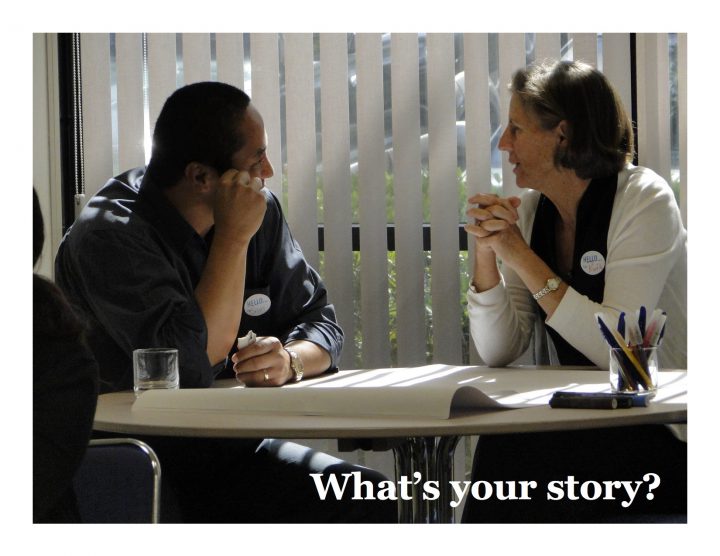
Last week I had the privilege of facilitating a two-day Network Learning Lab for a remarkable group of conservation leaders and network weavers. I co-designed the session with Olivia Millard and Amanda Wrona of The Nature Conservancy (and at the instigation of Lynn Decker of the Fire Adapted Communities Learning Network) to connect and strengthen the capacity of those working at the intersection of ecosystem health and human/community development while building networks at local, state, regional, national and global levels. Our design was informed by input given by the participating network weavers themselves about their core challenges and learning objectives, while leaving room for the unexpected – enough spaciousness for the network magic of emergence to happen.
As with other network leadership institutes that we at IISC have had a hand in designing and facilitating, the experience last week had as its foundation plenty of opportunities for the cohort to authentically connect, to get to know one another on both professional and personal levels. And as with both leadership development sessions and ongoing network development initiatives that we support, we turned to storytelling as a way to create bonds and understanding. This included time for the participants to tell brief stories about their networks, doing so in 5 minute informal bursts sprinkled throughout the two days (which could also have been done as Pecha Kucha or Ignite presentations). The intent was to create a bit more understanding of what might make each network unique in its aspirations, attributes and accomplishments and to whet people’s appetites for further conversation at breaks, meals and into the evening.
“There is no greater agony than bearing an untold story inside you.”
– Maya Angelou
We also set up a couple of exercises within the first hour of the lab for people to hear more about one another’s paths to the work they currently do, not by ticking off their resumes, but by telling stories about what happened to and moved them to be where they are now. Time and again, when I facilitate this kind of exercise, it shifts the tone of the gathering in the direction of greater openness and trust. And as we touched on in our debrief of those exercises, inviting that kind of storytelling into our work can send a signal about what is validated with respect to forms of knowing, expression and parts of ourselves to bring to the table. Along these lines, we also drew from poetry and other forms of creative expression, including a stanza from a favorite William Stafford piece, “A Ritual to Read to Each Other” which, to me, gets at the heart of network building … Read More
May 24, 2018
“We never know how our small activities will affect others through the invisible fabric of our connectedness. In this exquisitely connected world, it’s never a question of ‘critical mass.’ It’s always about critical connections.”
Grace Lee Boggs

As referenced in a previous post, the Food Solutions New England 21 Day Racial Equity Habit Building Challenge wrapped up about a month ago. This was the fourth offering of the Challenge, which was a remixed and enhanced virtual network form of an exercise created by Dr. Eddie Moore (founder of the Privilege Institute) and Debbie Irving (author of Waking Up White). A small design team of which I am a part originally saw the potential of using the Challenge to invite more widespread conversation about the connection between race, racism and sustainable food systems and ultimately greater action for racial justice. No one presumed that the Challenge in and of itself would be sufficient, but rather saw it as a way of creating “network effects” around the work that many are already doing in our region.
And there is evidence that there have been impacts happening as a result. Participation in the Challenge has grown from 200 to 3,000 from 2015 to 2018. This year the Challenge was launched, in a sense, at the Wallace Center’s National Good Food Network Conference in Albuquerque, New Mexico (gratitude to the Center’s staff for the invitation to do so!). We have heard stories since the beginning that various groups in the region and increasingly around the country have participated in the Challenge and invited others to do so, including Farm to Institution New England, Iowa State University Extension, The Interdependence Project, and The Fellowship of Intentional Community. Read More
May 22, 2018
Connection is a social determinant of health.
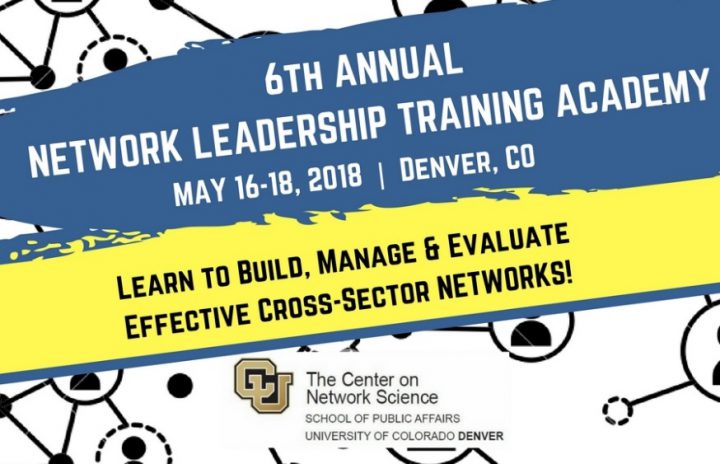
Last week I participated in the Network Leadership Training Academy hosted by the University of Colorado at Denver’s Center on Network Science. It was wonderful to meet fellow network geeks and enthusiasts from around the country and Canada and to hear about diverse applications of network theory and practice, from public health to public transportation, from early childhood education to after-school programming, from housing to firefighting.
I was invited to share some of what we at the Interaction Institute for Social Change are learning as we work at the intersection of networks and equity, which included telling the evolving story of Food Solutions New England. There seemed to be resonance with and appetite for going deeper to unpack how networks can be forces for truly equitable liberation from dysfunctional and damaging systems.
And there were many other presenters over the course of the couple of days I was able to attend. Here are some of my take-aways.
- In networks, less is often more with respect to personal connections. Given that people can only manage a certain number of social connections, a good question to ask is “How can we cultivate and maintain the fewest number of connections that are valuable?”
- Closed networks do not lend themselves to novelty. For innovation (and presumably for both resilience and adaptability) it is important to pay attention to “structural holes” in networks.
- Effective engagement rests on authentic listening, informal exchanges and meetings (lunch, coffee), identifying and honoring strengths and assets, thinking of people as people and not projects, constantly showing up and closing loops.
- In order to activate a network you have to have established sufficient trust and reciprocity.
- Effective networks for individual “leaders” are open (distributed), diverse and deep.
From conversation and reflection with participants:
- Connection is a social determinant of health.
- Increasingly healing needs to be viewed as a foundational goal of developing networks.
- Effective networks for individuals are not necessarily effective networks for collectives and social change. We have to be clear about what our scale and intentions are. (ON this front, check out this wonderful post by Christine Capra – “Networking Does Not Equal Network WEAVING“)
Additional resources to consult:
- The Partner Tool, a social network analysis tool designed to measure and monitor collaboration among people/organizations.
- Person-Centered Network App, for use by a provider to first screen a person to assess their gaps and strengths in their personal support systems and then, based on the results, link them to available community resources.
May 17, 2018
“Only connect! That was the whole of her sermon. Only connect the prose and the passion, and both will be exalted, and human love will be seen at its height. Live in fragments no longer.”
E.M. Forster, from Howard’s End
This is an excerpt from the final post in a series of five focused on networks for change in education and learning that have appeared on the Education Week and Next Generation Learning Challenges websites.
In this series on network design and network thinking, I explored the power and promise of networks as residing in how connection and flow contribute to life, liveliness and learning. See, especially, Connection is Fundamental.
In Why Linking Matters, I looked at how certain networks can more optimally create what are known as “network effects,” including small world reach, rapid dissemination, resilience, and adaptation.
I also noted, in Structure Matters in particular, that living systems–including classrooms, schools, school districts, and communities–are rooted in patterns of connection and flow. That’s why shifts in connections–between people, groups, and institutions–as well as flows of various kinds of resources can equate with systemic change, and ideally they can lead to greater health (in other words, equity, prosperity, sustainability).
Networks can also deliver myriad benefits to individual participants, including: inspiration; mutual support; learning and skill development; greater access to information, funding, and other resources; greater systemic or contextual awareness; breaking out of isolation and being a part of something larger; amplification of one’s voice and efforts; and new partnerships and joint projects.
It’s also true, however, that not every network or network activity creates all of these effects and outcomes. The last two posts looked at two factors that contribute to whether networks are able to deliver robust value to individual participants and the whole, including network structure and what form leadership takes. Networks are by no means a panacea to social and environmental issues and can easily replicate and exacerbate social inequities and environmentally extractive practice. So values certainly have a place, as does paying close attention to dynamics of power and privilege.
It is also the case that individual and collective behavior on a day-to-day basis have a lot to say about what networks are able to create. The following is a list of 25 behaviors for you to consider as part of your network practice as an educator:
- Weave connections and close triangles to create more intricacy in the network. Closing triangles means introducing people to one another, as opposed to networking for one’s own self, essentially a mesh or distributed structure rather than a hub-and-spoke structure.
- Create connections across boundaries/dimensions of difference. Invite and promote diversity in the network, which can contribute to resilience and innovation.
- Promote and pay attention to equity throughout the network. Equity here includes ensuring everyone has access to the resources and opportunities that can improve the quality of life and learning. Equity impact assessments are one helpful tool on this front.
- Name and work with power dynamics and unearned privilege in the direction of equity.
- Be aware of how implicit bias impacts your thinking and actions in the network. Become familiar with and practice de-biasing strategies.
- Think, learn, and work out loud, in the company of others or through virtual means. This contributes to the abundance of resources and learning in the network.
- Don’t hoard or be a bottleneck. Keep information and other resources flowing in the network.
- Identify and articulate your own needs and share them with others. Making requests can bring a network to life as people generally like to be helpful!
- Stay curious and ask questions; inquire of others to draw out common values, explicit and tacit knowledge, and other assets.
- Make ongoing generous offers to others, including services, information, connections.
For behaviors 11-25, see this link.
“… Keep reaching out, keep bringing in./This is how we are going to live for a long time: not always,/for every gardener knows that after the digging, after/the planting, after the long season of tending and growth, the harvest comes.”
Marge Piercy, from “The Seven of Pentacles”
May 14, 2018
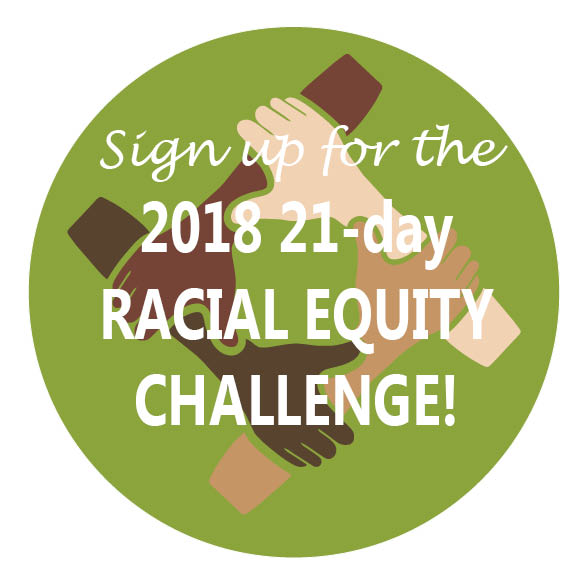 On April 22nd, the fourth annual 21 Day Racial Equity Habit Building Challenge wrapped up. This project with Food Solutions New England was originally conceived as a “network innovation” to spread and deepen the conversation about and commitment around addressing race and racism in food and related systems. This year the organizing team sought to go deeper, noting how much the national conversation has evolved in the past year. And we were heartened by the numbers (over 3,000 people from all 50 states and parts of Canada signed up) and by the quality of the conversation on-line and in different in-person venues where we met people who were participating. Certainly no one is under the illusion that the Challenge is enough, but we have heard that it is changing the way many see their work in food systems. Below you will find some of what was generously offered on-line in response to the daily email prompts and associated resources (readings, videos, audio clips).
On April 22nd, the fourth annual 21 Day Racial Equity Habit Building Challenge wrapped up. This project with Food Solutions New England was originally conceived as a “network innovation” to spread and deepen the conversation about and commitment around addressing race and racism in food and related systems. This year the organizing team sought to go deeper, noting how much the national conversation has evolved in the past year. And we were heartened by the numbers (over 3,000 people from all 50 states and parts of Canada signed up) and by the quality of the conversation on-line and in different in-person venues where we met people who were participating. Certainly no one is under the illusion that the Challenge is enough, but we have heard that it is changing the way many see their work in food systems. Below you will find some of what was generously offered on-line in response to the daily email prompts and associated resources (readings, videos, audio clips).
History of Race and Racism in the Food System: What is the history you hold in your head (and heart and body) about our current food systems?
“In my work at a non profit in the ‘good food’ movement, we constantly use language like ‘fix the broken food system.’ Reading these pieces on the historical underpinnings of racism in our food system illuminated for me just how much that statement (almost a throw away now) is situated within a racial caste system. To presume that ‘we’ must ‘fix’ a system ignores (by not naming) the racism present in that system. It lumps the goals of racial and food justice in with other, non-racialized issues (like soil health) also plaguing our current system, thereby continuing to perpetuate injustice through silence.”
“The consistent glorification of a food system, broken or fixed, imagined or real, that has systematically ignored the people that make it function, throughout the past and yet still in the present, is something I think I unknowingly participate in. Will naming this, calling it out, help us to change the structural racism that fuels this reality? How? I hope that by learning, studying, reflecting, and communicating that this group can indeed be somehow change-making, but it’s challenging to see a positive horizon when the change to be had is so large and primarily resides in legal, political and social institutions and structures. Forgive me for being still inside a state of feeling overwhelmed.”
The Colonization of Indigenous Land Rights and Food Ways: How does colonization continue to exist in our food systems and how can you support decolonization and celebrate indigenous rights and food ways?
“I just finished listening to The True History & Foods of Thanksgiving. My immediate reaction is shock and shame. I accepted Thanksgiving as an American celebration without ever wondering about its history. The podcast is a great conversation that educated me about how interwoven food, land, location, spirituality and culture are for some traditions within Native Americans. I wish we treated our lands and environment with the same care that many people were able to do before they were colonized.”
“In my state, treaties still continue to be broken with Native American communities, the most recent agreement being broken in 2015. State programs aimed to “help” are rooted in white supremacist ideologies. I think of Audrey Lorde when she declared, “For the master’s tools will never dismantle the master’s house. They may allow us to temporarily beat him at his own game, but they will never enable us to bring about genuine change. Racism and homophobia are real conditions of all our lives in this place and time. I urge each one of us here to reach down into that deep place of knowledge inside herself and touch that terror and loathing of any difference that lives here. See whose face it wears. Then the personal as the political can begin to illuminate all our choices.”
Read More
April 19, 2018
IISC is pleased to offer the following three opportunities.
- Senior Associate
- People Operations Coordinator
- Training Coordinator
This search is being led by Imagine Consulting, a talent and recruitment firm specializing in supporting nonprofit organizations in securing an equitable and antiracist future for our world. Interested candidates should click here to apply. If you have questions or need support completing the application, please reach out to our team at careers@imagineimpactllc.com.
IISC’s Values
Our values are as important as the skills you will provide to our organization. These values guide IISC in our work internally and externally:
- We believe that social change is possible when three key elements are attended to: shared power and equity, network building, and love as a force for social change
- We believe that transformative leadership is the kind of leadership we need in the 21st century
- We believe in people’s right to be involved in the decisions that affect them so that they have influence over the quality of their lives
- We believe in the dignity of all human beings and in taking care of our planet so that we can all live healthy lives and our communities can thrive
Senior Associate
The Senior Associate works with organizations, networks, government agencies and communities to produce and deliver services that are committed to transformational, long-term change for racial equity. The Senior Associate also contributes to our evolving methodology and strategy, committed to peer learning, and contributes to IISC’s staff goals as we strengthen our equitable workplace. We currently have two openings for this role, with one of the positions will be focused on training and developing new curriculum and innovations.
Learn more and apply by 4/17.
People Operations Coordinator
Position Summary:
The People Operations Coordinator is responsible for overseeing the administrative tasks related to the HR, benefits, and operations functions of an organization. The position serves as a project manager for hiring coordination and preparation, manages the onboarding and offboarding processes, maintains employee records, tracks employee training, and ensures compliance with legal and regulatory agencies. The ideal candidate will be motivated by supporting staff of a mission-driven organization in advancing racial equity and social justice, while maintaining internal processes that align with the organization’s values and culture.
Learn more and apply by 4/7.
Training Coordinator
Position Summary:
The Training Coordinator is responsible for providing logistical support for public offerings and training sessions, ensuring successful, high-quality experiences for clients, staff, and participants. Their duties include assisting before and during sessions, answering questions, managing registration through an event ticketing system, and organizing data for reporting. They should be confident in providing support for both online training sessions using Zoom features as well as in-person public workshops. The ideal candidate is a well-rounded individual who can coordinate with all stakeholders to handle the finer details of training experiences, ensuring the successful completion of workshops for all involved.
Learn more and apply by 4/7.
IISC is an Equal Opportunity Employer.
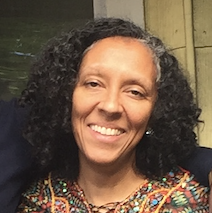




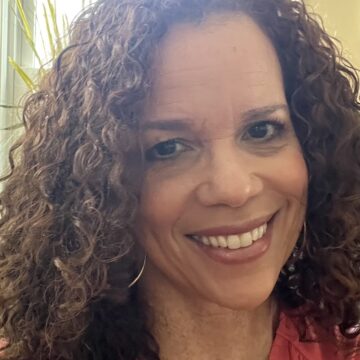






 On April 22nd, the fourth annual
On April 22nd, the fourth annual